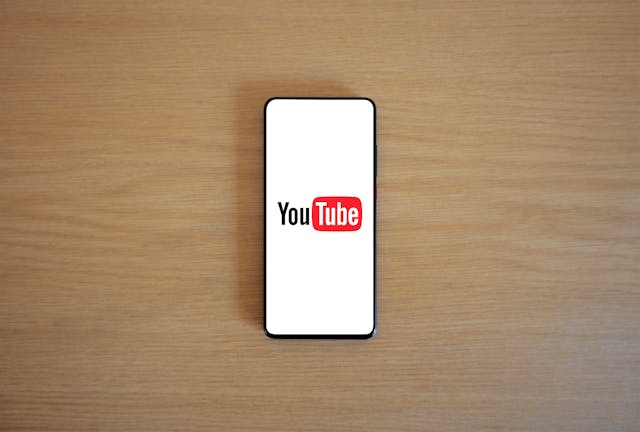YouTube has become synonymous with video content and digital marketing, serving as a cornerstone for brands seeking to engage with audiences in dynamic and impactful ways. Launched in 2005 and acquired by Google in 2006, YouTube has evolved into a global powerhouse with over 2 billion monthly logged-in users, offering unparalleled opportunities for marketers. Read on to learn about the intricate and highly effective marketing strategy of YouTube, with valuable insights and inspiration for marketing professionals aiming to harness the power of video marketing.
The Genesis of YouTube’s Marketing Triumph
YouTube’s journey from a simple video-sharing platform to a marketing juggernaut is rooted in its understanding of user behavior and its ability to innovate continuously. Initially, YouTube capitalized on the growing demand for user-generated content, offering a space where individuals could share videos effortlessly. This grassroots appeal quickly attracted a massive audience, laying the foundation for YouTube’s future marketing strategies.

Leveraging User-Generated Content
One of YouTube’s most brilliant strategies has been leveraging user-generated content (UGC). UGC is not only cost-effective but also fosters a sense of community and authenticity. YouTube encouraged users to create and share content, which in turn generated a vast and diverse video library. This approach democratized content creation, giving rise to a plethora of creators who brought their unique voices and perspectives to the platform.
For marketers, YouTube’s strategy underscored the importance of authenticity and community engagement. Brands that embraced UGC found themselves resonating more with audiences, as consumers often trust content created by their peers more than traditional advertising.
The Power of Influencers
YouTube’s recognition of the power of influencers has been a game-changer. By nurturing a vibrant ecosystem of content creators, YouTube cultivated a new breed of influencers who wield significant sway over their audiences. These influencers, or YouTubers, have built loyal followings through their relatable content and authentic engagement.
YouTube’s partnership programs and monetization options provided incentives for these creators to produce high-quality content consistently. This symbiotic relationship not only bolstered YouTube’s content pool but also offered marketers a direct line to engaged and targeted audiences. Brands began collaborating with influencers to promote products and services, leveraging their credibility and reach to enhance marketing campaigns.
Data-Driven Decisions
At the core of YouTube’s marketing strategy is a reliance on data-driven decisions. The platform’s integration with Google’s robust analytics tools enables detailed insights into viewer behavior, engagement metrics, and demographic information. This wealth of data allows YouTube to tailor its marketing efforts with precision.
For marketing professionals, this emphasizes the critical role of analytics in crafting effective strategies. By understanding audience preferences and behaviors, brands can optimize their content, targeting, and overall marketing approach to achieve better results.
Content Diversity and Personalization
YouTube’s commitment to content diversity and personalization has been instrumental in its success. The platform offers an eclectic mix of content, from educational videos and entertainment to tutorials and vlogs. This diversity ensures that there is something for everyone, making YouTube a go-to destination for users with varied interests.
Personalization further enhances user experience. YouTube’s recommendation algorithm, powered by machine learning, suggests videos based on users’ viewing history and preferences. This personalized approach keeps users engaged longer and encourages them to explore new content, benefiting both creators and marketers.
Community Engagement and Interactive Features
Building a sense of community has always been a priority for YouTube. The platform’s interactive features, such as comments, likes, shares, and live streaming, facilitate direct engagement between creators and their audiences. These features foster a sense of belonging and encourage active participation, which is invaluable for maintaining a loyal user base.
For marketers, this highlights the importance of fostering community engagement. Interactive campaigns, user feedback, and real-time interactions can significantly enhance brand loyalty and consumer trust.
Seamless Integration with Google Ecosystem
YouTube’s integration with the broader Google ecosystem has provided it with a formidable advantage. Leveraging Google’s search capabilities, YouTube videos often appear prominently in search results, driving organic traffic to the platform. Additionally, the integration with Google Ads allows for sophisticated targeting and retargeting options, enabling marketers to reach specific audience segments with tailored messages.
This integration exemplifies the benefits of a cohesive digital ecosystem. For brands, it underscores the value of cross-platform synergy and the potential to amplify marketing efforts through integrated solutions.
The Advent of YouTube Shorts
Recognizing the rising popularity of short-form content, YouTube introduced YouTube Shorts in 2020. This feature allows users to create and share brief videos, capitalizing on the trend set by platforms like TikTok. YouTube Shorts has quickly gained traction, offering creators a new format to experiment with and engage audiences.

The success of YouTube Shorts demonstrates the importance of adaptability in marketing. By staying attuned to emerging trends and being willing to pivot, brands can remain relevant and capture new audience segments.
Advertiser-Friendly Policies and Brand Safety
YouTube has also made significant strides in creating a brand-safe environment for advertisers. The platform’s stringent policies against inappropriate content, coupled with advanced content moderation tools, ensure that ads are displayed in a safe and suitable context. This commitment to brand safety has made YouTube a trusted partner for advertisers, enhancing its appeal as a marketing channel.
For marketers, this highlights the importance of brand safety and reputation management. Ensuring that advertising content is displayed in appropriate contexts can significantly impact brand perception and consumer trust.
Innovative Ad Formats and Campaigns
YouTube’s innovative ad formats have redefined digital advertising. From skippable and non-skippable ads to bumper ads and sponsored content, YouTube offers a variety of options to suit different marketing objectives. Interactive ad formats, such as TrueView ads, allow users to choose whether to engage with an ad, providing a more personalized and less intrusive experience.
Moreover, YouTube’s shoppable ads and integration with e-commerce platforms have streamlined the path from discovery to purchase, enhancing conversion rates. These innovations demonstrate the platform’s commitment to improving advertiser ROI and user experience simultaneously.
Case Studies: Brands That Mastered YouTube Marketing
To illustrate the effectiveness of YouTube’s marketing strategy, let’s explore some case studies of brands that have excelled on the platform.
Nike: Just Do It on YouTube
Nike has been a pioneer in leveraging YouTube for its marketing campaigns. By creating compelling, high-quality content that resonates with its target audience, Nike has consistently achieved impressive engagement levels. One of Nike’s most successful campaigns, “You Can’t Stop Us,” utilized powerful storytelling and visual effects to inspire viewers and reinforce the brand’s ethos of resilience and perseverance. The video garnered millions of views and shares, demonstrating the impact of emotionally charged content.
Nike’s strategy underscores the importance of aligning content with brand values and leveraging storytelling to create emotional connections with the audience.
Red Bull: Content That Gives You Wings
Red Bull’s approach to YouTube marketing revolves around extreme sports and adrenaline-pumping content. The brand’s YouTube channel is filled with awe-inspiring videos of stunts, sports events, and adventurous activities, reflecting its brand identity. Red Bull’s commitment to producing high-quality, visually stunning content has helped it build a loyal following and position itself as a lifestyle brand.
This case study highlights the significance of aligning content with brand identity and creating visually engaging content to captivate audiences.
Blendtec: Will It Blend?
Blendtec, a blender manufacturer, gained viral fame with its “Will It Blend?” series on YouTube. The videos feature the company’s founder blending unconventional items, such as smartphones and marbles, to demonstrate the power of Blendtec blenders. The quirky and entertaining nature of the content, combined with its clear demonstration of product efficacy, led to massive viewership and brand recognition.
Blendtec’s success story illustrates the power of creativity and humor in marketing. By thinking outside the box and creating entertaining content, brands can achieve viral success and boost product visibility.
The Future of YouTube Marketing
As YouTube continues to evolve, its marketing strategies are likely to adapt to new trends and technologies. The rise of augmented reality (AR) and virtual reality (VR) presents exciting possibilities for immersive content experiences. Additionally, the growing emphasis on sustainability and social responsibility is likely to influence the types of content that resonate with audiences.
For marketing professionals, staying ahead of these trends and continually experimenting with new formats and strategies will be key to maintaining a competitive edge.
Lessons for Marketing Professionals
YouTube’s marketing strategy offers a wealth of lessons for marketing professionals. From leveraging user-generated content and influencer partnerships to harnessing the power of data and personalization, YouTube’s success is built on a foundation of innovation, authenticity, and community engagement.
By understanding and applying these principles, marketers can create compelling campaigns that resonate with their audiences and drive meaningful results. As YouTube continues to shape the digital marketing landscape, staying informed and adaptable will be crucial for marketers aiming to achieve success in this dynamic environment.
In summary, YouTube’s marketing strategy is a masterclass in leveraging the power of video content to build a global brand. For marketing professionals, it serves as a source of inspiration and a roadmap for harnessing the potential of video marketing to connect with audiences, drive engagement, and achieve business objectives.

